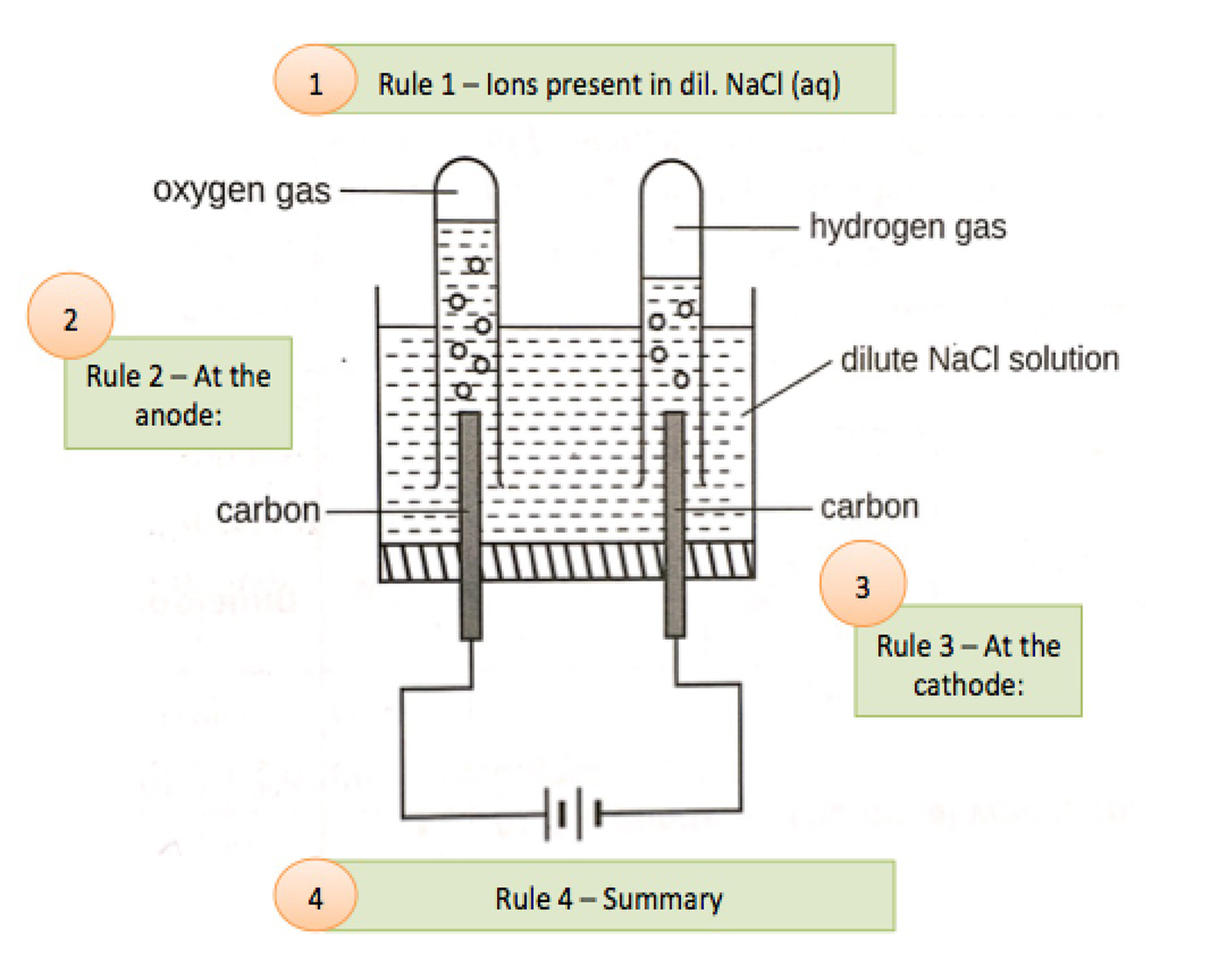The ions present are: Ions from sodium chloride - Na+(aq) and Cl-(aq) Ions from water - H+(aq) and OH-(aq)

At the anode, OH- and Cl- ions are attracted to the carbon anode. OH- ions give up electrons more readily than Cl- ions. Thus, OH- ions are preferentially discharged to form water and oxygen gas. Ionic half equation: 4 OH-(aq) --> 2 H2O(l) + O2(g) + 4 e- The Cl- ions remain in solution.